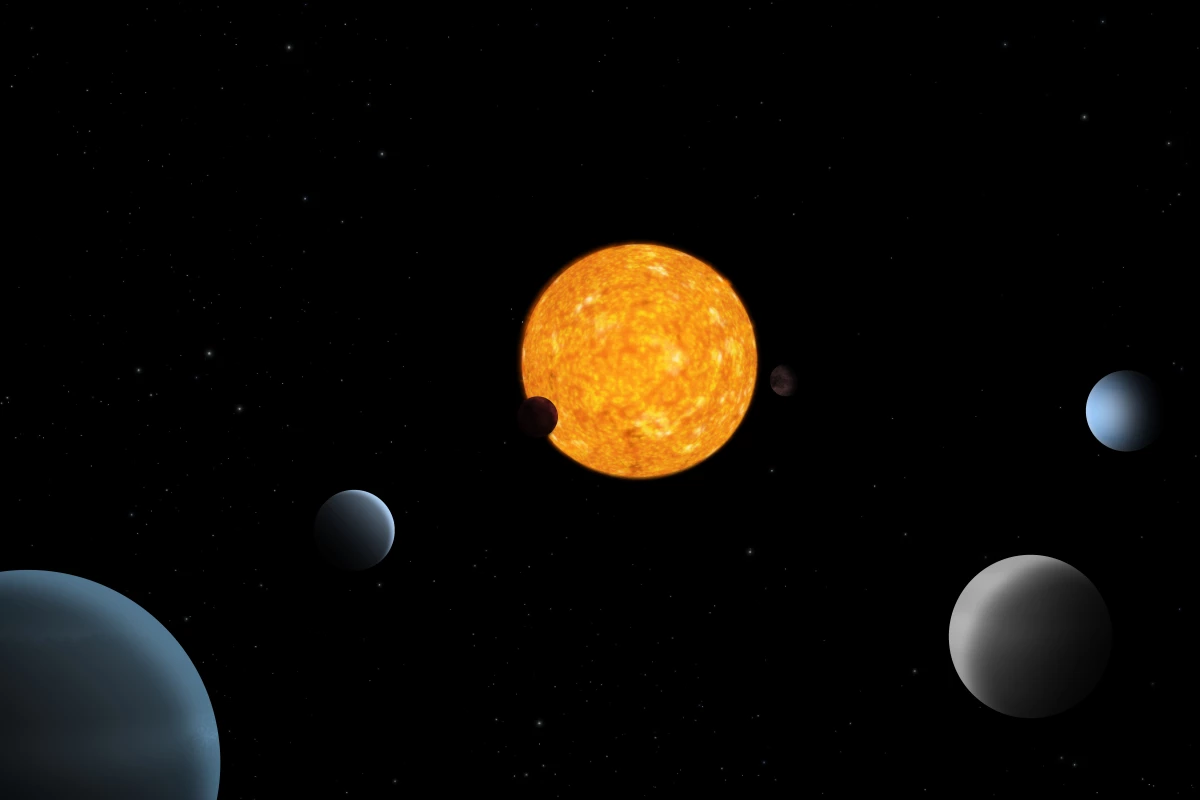Astronomers have discovered a nearby system of exoplanets with unusually orderly orbits but disordered densities. Five of the six planets circle the star in a rare rhythmic dance called a resonance chain, and the types of planets are far more shuffled around than usual.
The star at the center of this strange system is called TOI-178, while the planets follow the usual naming convention of TOI-178b through g. The whole thing is about 200 light-years from Earth in the constellation of Sculptor.
The planets were discovered by an international team of astronomers using the CHEOPS satellite, the Very Large Telescope (VLT) and the Paranal Observatory. To find them, the researchers studied the star using two different methods – transits, where the light from the star dips as exoplanets pass in front of it, and radial velocities, where the star’s light spectrum changes due to wobbles from the planets’ gravity.
From this, the researchers found that the TOI-178 system contains six planets, ranging from about the size of Earth to three times bigger, and with masses between 1.5 and 30 Earths. The inner two are rocky so-called Super-Earths, while the outer four are gaseous Mini-Neptunes. They’re all packed in much closer to the star than Earth is to the Sun, with their “years” lasting between a few (Earth) days to a few months.
On closer inspection, those orbits were discovered to be weirder than expected. The five outer planets are locked in a precise resonance chain, meaning they regularly align after completing an exact number of orbits each time.
Starting from the star, the chain goes 18:9:6:4:3, one of the longest ever discovered. That means that for every three orbits made by the outermost planet, the next outermost has completed four, the next in has done six laps, the next nine, and the innermost world will have circled the star 18 times.
It may sound like an unimportant coincidence, but this kind of resonance pattern can help astronomers infer a lot about the history of the system. For instance, it suggests that there weren’t many major collisions in its early days, which would have disrupted the delicately spinning plates.
“The orbits in this system are very well ordered, which tells us that this system has evolved quite gently since its birth,” says Yann Alibert, co-author of the study.

But the order shown in the orbits doesn’t seem to apply to other things. In our solar system, the planets are more or less neatly arranged by density – the dense, rocky worlds of Mercury, Venus, Earth and Mars are the closest to the Sun, followed by the much less dense gas and ice giants Jupiter, Saturn, Uranus and Neptune. Most other known systems follow similar patterns, but that’s not the case in the TOI-178 system.
“It appears there is a planet as dense as the Earth right next to a very fluffy planet with half the density of Neptune, followed by a planet with the density of Neptune,” says Nathan Hara, an author of the study. “It is not what we are used to.”
How exactly the planets came to be in this haphazard configuration, while still maintaining their fragile orbital resonance, is a puzzle that could change what we know about how planetary systems form and develop over time.
The research was published in the journal Astronomy & Astrophysics. A musical animation of the resonance pattern can be seen in the video below.




